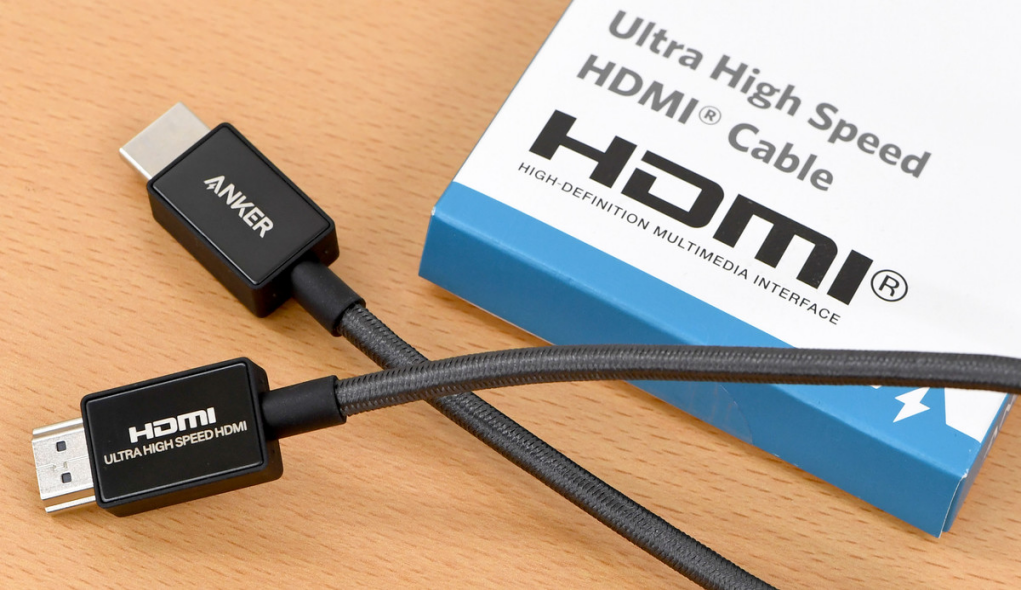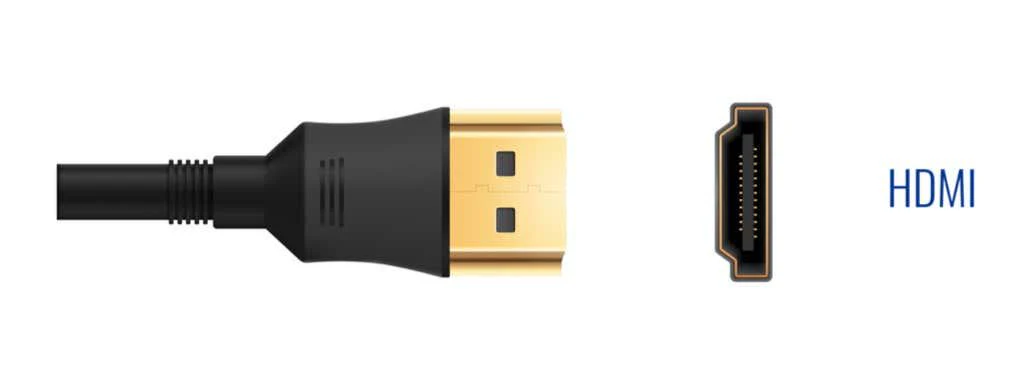
The High-Definition Multimedia Interface (HDMI) cable is one of the most popular options for connecting electronics that can play multimedia. You will need an HDMI cable to connect your PC to your monitor or your game console to your TV. But HDMI connections confuse many people since there are several cable standards to choose from. Which HDMI cable is right for you? You will find an explanation about HDMI cables and what to consider for a good HDMI cable in this article.

What Is HDMI?
Here is a brief explanation for you who are still asking, "what is HDMI?". HDMI, which stands for High Definition Multimedia Interface, is the most often utilized HD signal for transmitting high-definition video and audio over a cable.
Besides being utilized in the commercial AV sector, HDMI is also what most people use to connect their gadgets like Apple TV, Xbox, PlayStation, DVD and Blu-ray players to their televisions.

These days, HDMI is featured on laptops and PCs, making it the industry standard for the corporate and commercial markets. It is used to transfer high-quality audio and video signals through devices for various use, such as in education, presentations, digital signage, and retail displays.
- HDMI Type A connector
Different Types of HDMI Cables and Connectors

The HDMI standard started with this connector. AV equipment users are most familiar with the Type A connector, found on TVs, satellite boxes, DVD players, recorders, game consoles, and more. Type A HDMI connectors are the strongest and best for spaces without constraints.
In 2002, this HDMI connector was introduced for dual-link DVD-I video. Due to the fact that the newer HDMI 1.3 increased the speed of a single link that exceeded the previous dual link in HDMI Type B connector, this connector was never used in products.
Mini-HDMI connectors are smaller than Type A connectors. Besides the smaller connector size, Mini-HDMI has the same capabilities as HDMI Type A. As HDMI became more popular, a smaller connector was needed, hence HDMI Version 1.3 introduced the HDMI micro connector.
With HDMI 1.4, the HDMI Type D connector was introduced. Because its size is similar to a micro-USB connector, the HDMI Type D connector is also known as a micro-HDMI connector. It was designed for mobile phone audio-video communication.
Type E HDMI connectors are for automotive. With the release of HDMI 1.4, this connector was also added.
Different Versions of HDMI

HDMI 1.0
- The HDMI standard's release version - an audio and video interface that supported the transfer of both standard and high-definition video.
- Uncompressed digital audio of up to 8 channels.
- Data transfer rates of up to 4.9 Gb per second are possible.
- Full-resolution playback of the video and audio on a standard Blu-ray disc.
- This version includes support for DVD audio.
- Bit Audio file types, such as SACD, are supported (up to 8 channels).
- Fully specified support for Consumer Electronics Control (CEC).
- The bandwidth has been increased to 10.2 Gb/s.
- Support for Deep Color and x.v.Colour. These offer greater color depths and the capacity to replicate any color our eyes can see.
- Devices can automatically synchronize the picture and sound via lip sync.
- Controlling consumer electronics devices with CEC extensions.
- Allows high-definition Dolby TrueHD and DTS-HD Master Audio to be sent to an AV receiver for decoding.
- Support for higher resolutions, including 4096 x 2160p at 24Hz and 3840 x 2160p at 25/30Hz.
- The audio return channel (ARC) supports the TV transmitting audio to an AV receiver or soundbar through an HDMI cable connection. As a result, it is possible to transmit this audio easily to a home theater system.
HDMI 2.0
- The supported bandwidth has improved to 18Gb/s.
- This version supports 4K Ultra HD resolutions at 60 frames per second with 4K HDMI cable.
- Support for the BT.2020 standard in UHD TVs.
- Up to 32 audio channels are supported.
- Up to 1536 kHz audio resolution is supported.
- Dual video streams to the same screen are supported.
- There is no need to buy a new cable; simply use a version 1 or 2 cable.
HDMI 2.0a
- High Dynamic Range (HDR) video is supported in this version.
- Support for Hybrid Log-Gamma (HLG) video, a type of HDR, has been added.
HDMI 2.0
- Dynamic HDR support has been added.
- With this version, you can use 8K HDMI cable to watch videos in 8K/120 and 4K/120 resolutions.
- The availability of Display Stream Compression (DSC).
- Specified a new cable type (48G) and Enhanced Audio Return Channel (eARC).
- Support for better gaming and media features, such as
- Variable Refresh Rate (VRR): to reduce lag and stutter during gaming,
- Auto Low Latency Mode (ALLM): to enable their best low latency settings for gaming,
- Quick Media Switching (QMS): to remove any delay before content is displayed,
- Quick Frame Transport (QFT): to reduce latency when gaming.
The Final Thoughts
HDMI cable can help you achieve the transfer of high-definition video and audio between modern AV devices. There are various HDMI cables and connectors, along with their types and versions; this article has already explained the differences. Many choices are available in the market, but you can consider the material, specification, and HDMI cable length. Among so many options, Anker ultra high speed HDMI cable is one you can rely on.
FAQs About HDMI Cable
Besides those explanations above, there are some frequently asked questions related to HDMI cable.
1. How Do I Use HDMI on My TV?
If you still wonder how to connect HDMI cable to your TV, follow the steps below.
- Find the HDMI ports on the laptop and the television.
- Connect one end of the HDMI cable to the laptop and the other end of the HDMI cable to the TV.
- Select the HDMI source on the TV by looking for a "Source" or "Input" button on the remote control or a button with a similar label. Use this button to select the HDMI port your PC is connected to.
- Finally, you can start watching on your TV.
2. Can My Phone Connect With HDMI?
Sure, you can connect your phone to other AV devices using HDMI cables. You can use a USB Type-C to HDMI adapter as the additional tool to connect your phone to an HDMI cable.
3. Do You Need Special HDMI Cables for A 4K TV?
Yes. High Speed HDMI cables support an increased bandwidth for up to 18 Gbps which is needed for many of the latest 4K viewing options.














